Determining Field Playability
Deciding to play on a wet field can cause additional damage to the fields and put players at risk.
If there is standing water on the field, it is not playable
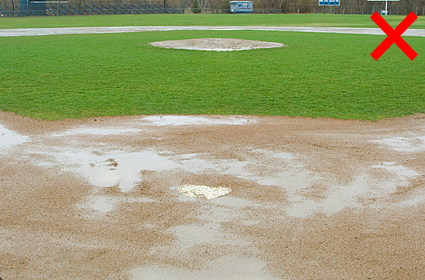
Another way to test if the field is playable is to step lightly on the infield grass. If your foot leaves an imprint, the field is not playable.
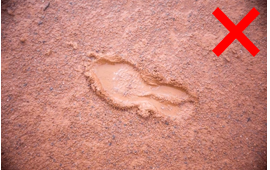
Water Removal Techniques
DO NOT Use These Methods on Wet Fields!
DO NOT use brooms or rakes to disperse puddles.
DO NOT sweep a puddle into the grass.
DO NOT remove muddy infield mix from the field.
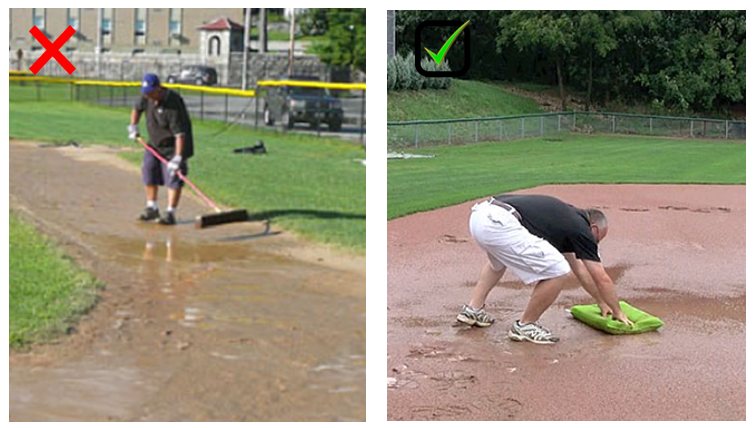
For Small Or Shallow Puddles, Use Water Absorbent Foam Sponges
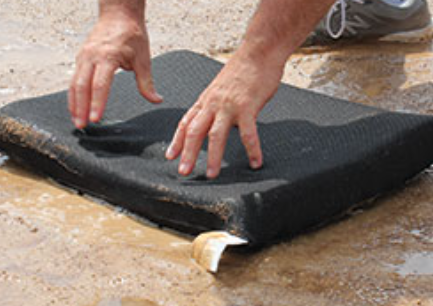
We keep three black sponges at every field. They are located either in the garage or the field closet.
Allow the foam sponge to soak up the water.
Have a bucket nearby to wring out the saturated foam, or ring them out on a cement area near the field
Empty the bucket of water off the field of play. Do not dump the extracted water in the outfield or gravel areas.
Once completed, ring out the foam sponges and put them back. Do not put soaked foam sponges back in the garage or closet.
Addition Of Field Drying Agents
We keep bags of these field drying agents in the field shed or closets. Never use more than one bag per field. If you think you need more than one, then it is too wet to play.
Steps for Applying a Drying Agent
First remove as much water as possible using the foam sponge method.
Use a cup or hand to evenly apply a thin layer of the drying agent.
The material may be lightly incorporated using a rake or left on top of the infield mix.
Ensure the field dry does not get into the grass
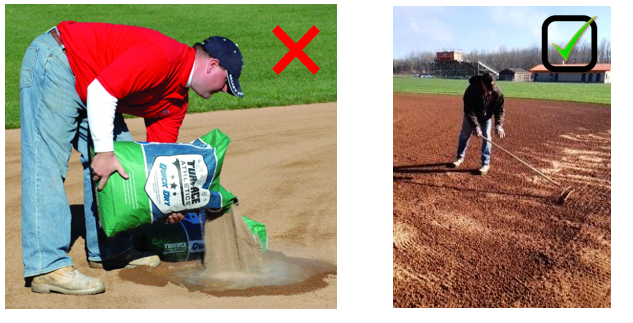
Field Game Prep
Raking
Lining the Field
Always use a string line, they are located in the field shed or utility closet
Each string line will have a spike attached
Push the spike in just behind the point of home plate closest to the backstop.
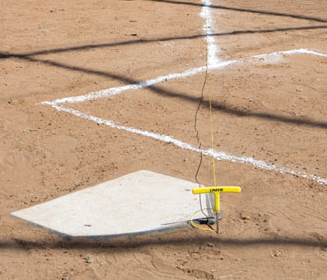
Run the string from the spike to the foul territory side of the foul pole. In other words, run the string to the right side of the right field foul pole and to the left of the left field foul pole.
The foul territory side of first and third base should be just touching the string. Once the string has been straightened, apply the marking lime to the infield side of the string. In other words, run the line on the inside of the string.
When using the chalk marker make sure that you set it to the first open notch for the 2″ line width.
The foul line should run under the outside of the bases as shown below.

Place Bases Down
Batters Boxes
Each press box has a Softball Batters Box Template located in it.
Make sure that the batters area is well raked and has good loose infield mix.
Set the official home plate locator on home plate so that it matches the shape as pictured below.
Stand on the home plate locator and then you want to use the pivoting movement of the template to have the box template press into the loose infield mix to make an indentation that we will use to mark the proper lines of the boxes.
Carefully pivot the box template back up and then flip the home plate locator to the other side of the plate. Then press it down on the other side of the plate to make the other batters box.
Once you are done with the template you should have two well defined indents in the sand to allow you to chalk the boxes.
If you make a mistake then you can rub out the mistake with a foot or brush and remark the lines.